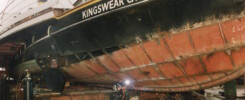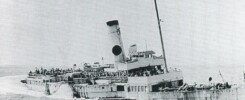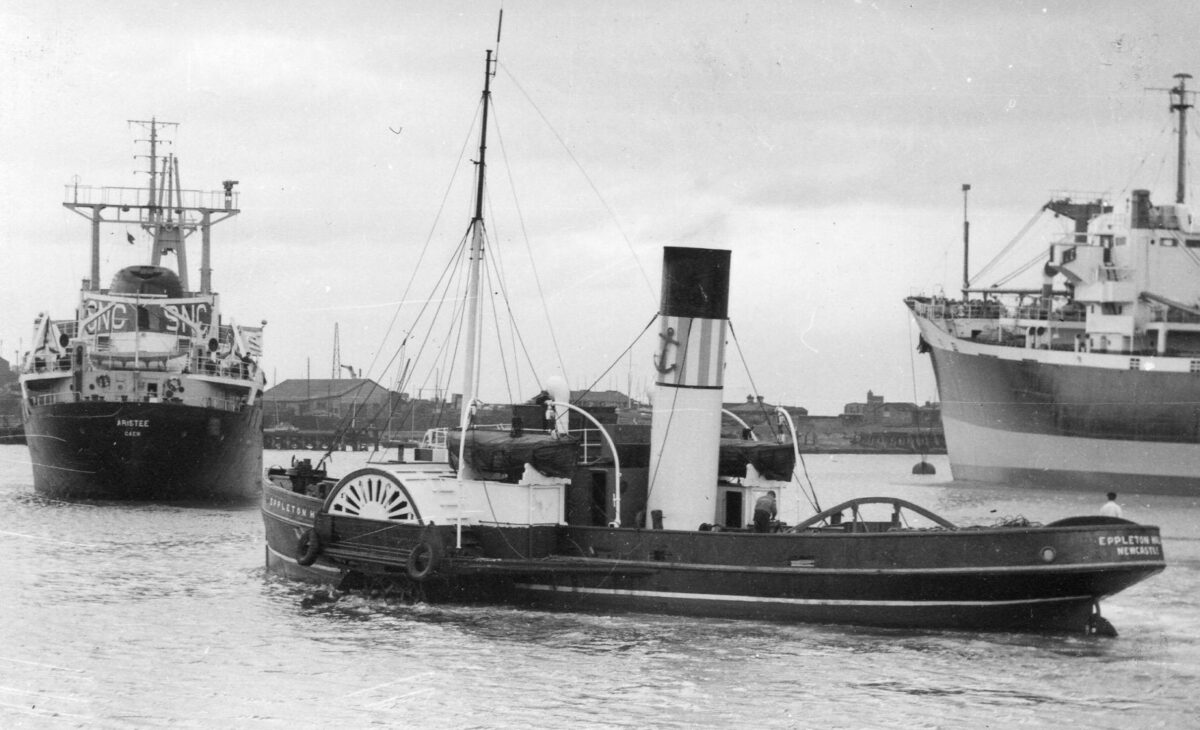
On Friday 9th January 1970 Eppleton Hall was one day away from arriving in Cartagena in Columbia on the north coast of South America.
On 15th December she had arrived in Georgetown Guyana after completing her 2,000 mile crossing of the Atlantic from Mindello in the Cape Verde Islands. They had chosen this route not only as the shortest distance across but also because its southerly position increased the likelihood of a smooth passage. The north Atlantic can be a pretty turbulent place in winter which is why the Plimsoll Line on ships undertaking international voyages has a special line to be marked on the sides of ships marked “Winter North Atlantic” above which the ship cannot be loaded. That means that ships can carry less cargo or weight on such crossings than at other times of the year and in other locations in order to raise their freeboards against the potential Atlantic storms ahead.
To get as far as Georgetown was a major milestone for the crew and the tug but the voyage itself was by no means over yet. There was still another 1,200 nautical miles to steam along the north coast of South America just to reach the Panama Canal for the transit from the Atlantic to the Pacific. Then there was more than another 3,000 miles up the North American coast to reach her final destination in San Francisco.

After a few days in Georgetown Eppleton Hall was off again paddling north westwards along the coast of Guyana. There are two entrances to the gulf of Paria which separates Trinidad from the mainland and both have names which seem a tad unwelcoming to the intending mariner. The Dragon’s Mouth is for deeper draft vessels and is well marked. The Serpent’s mouth is for vessels of more modest draft and is not so well marked. The captain chose the second and after a hair raising passage past foaming water breaking on coral reefs eventually entered the Gulf of Paria. This is described in the Admiralty pilot as containing “Oil well drilling platforms which form a serious hazard to navigation. These are moved from time to time. Extreme caution is advised when navigating within the Gulf as some may not be charted.”
And so it turned out. However the proliferation of oil wells produced one unexpected and somewhat convivial highlight for the voyage. On spotting Eppleton Hall flapping through their midst a tremendous quantity of work boats set off from the various rigs and made beelines for the paddler to have a close up gander at this strange vessel as she made her way to tie up in Port of Spain on Trinidad. There she spent Christmas.

After four days in Port of Spain, including a visit to a local shipyard for some welding work, Eppleton Hall was off again this time paddling out through the Dragon’s Mouth before setting off along the shoreline of Venezuela. By now the coastal scenery had changed from the low mangrove swamps of the Orinoco to sheer blue-green and purple mountain range. The winds were balmy and favourable, the seas moderate and the tropical air constantly cooled by numerous squally rain showers. After three days sailing through a necklace of small islands and atolls the tug entered the channel between Aruba and Curacao and headed north to the narrow entrance into the delightful little harbour of Willemstad just as a magnificent display of fireworks signalled that it was New Year’s Eve.
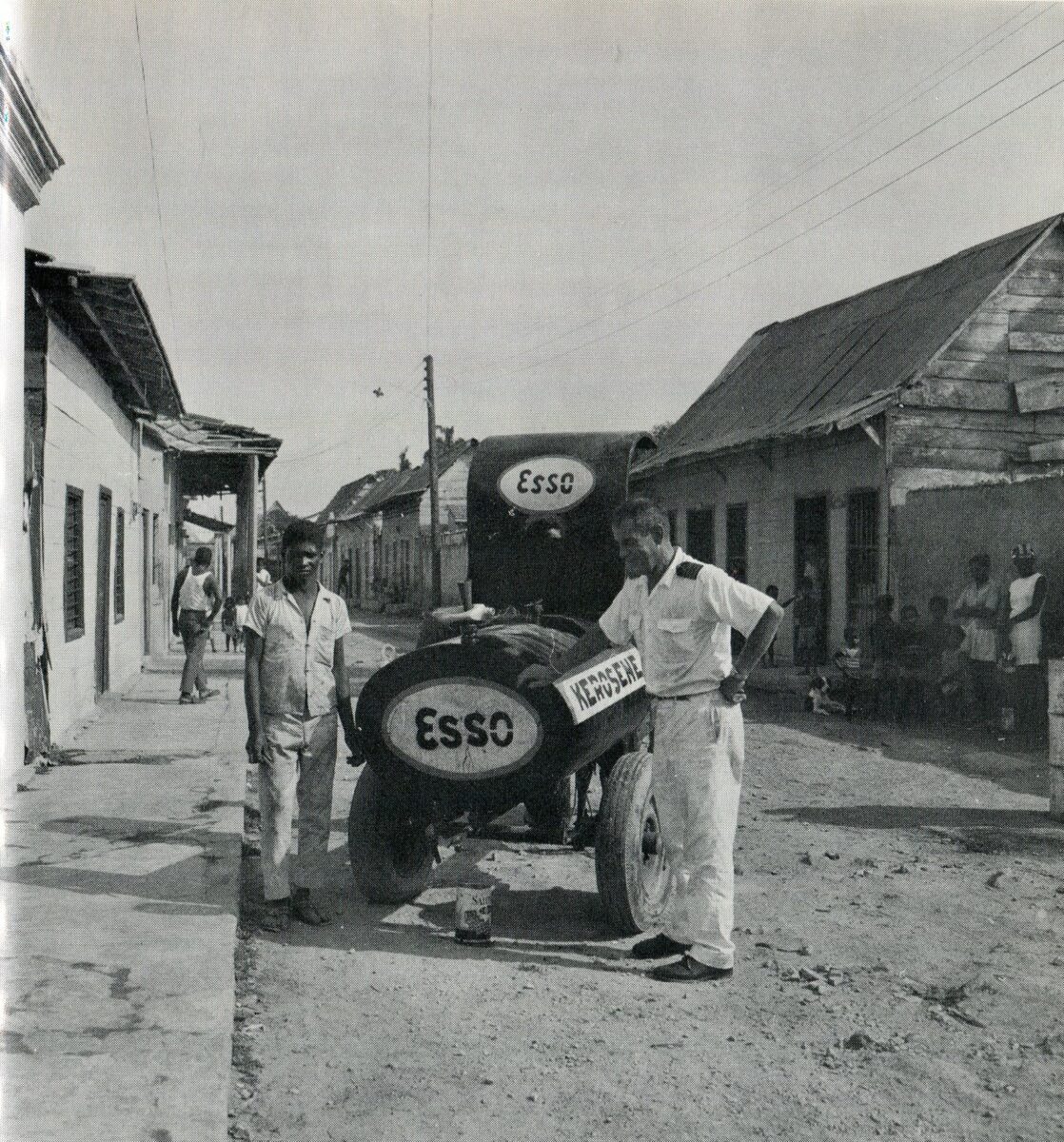
Once again as in Port of Spain the crew spent four days of basic rest and recreation including swimming, sight seeing, skin diving and watching the schools of tropical fish flash in and out among the reefs. Fuel was then taken on at Willemstad’s Esso Pier, a pilot came aboard and Eppleton Hall was off again sailing along the old Spanish main towards Cartagena.
The passage was good. The wind was fair if sometimes breezy and was sufficient to fill the sails for most of the time. The Caribbean coastal current pushed Eppleton Hall onwards past Aruba and along the coast of Venezuela, past Lake Maracaibo and round the northern tip of South America at Punta Gallinas. Then the tug steamed south towards the Rio Magdalena in Columbia, which flows north into the Caribbean from the Columbian highlands near Bogota. By Friday 9th January 1970 Eppleton Hall was one day out from arriving in Cartagena the keystone stronghold of the Spanish colonial galleon flotilla.
To be continued.
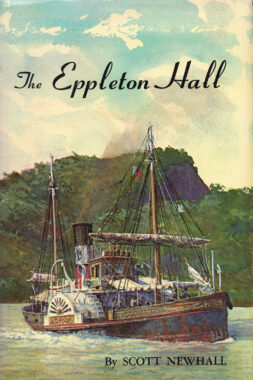
For the full story of this epic voyage from Newcastle to San Francisco try to get hold of the account by her master, Captain Scott Newhall, called “The Eppleton Hall” and published in 1971 by Howell North books in Berkeley California, ISBN 978-0831070854.
Kingswear Castle returned to service in 2023 after the first part of a major rebuild which is designed to set her up for the next 25 years running on the River Dart. The Paddle Steamer Kingswear Castle Trust is now fund raising for the second phase of the rebuild. You can read more about the rebuilds and how you can help if you can here.
John Megoran
This article was first published on 9th January 2021.

